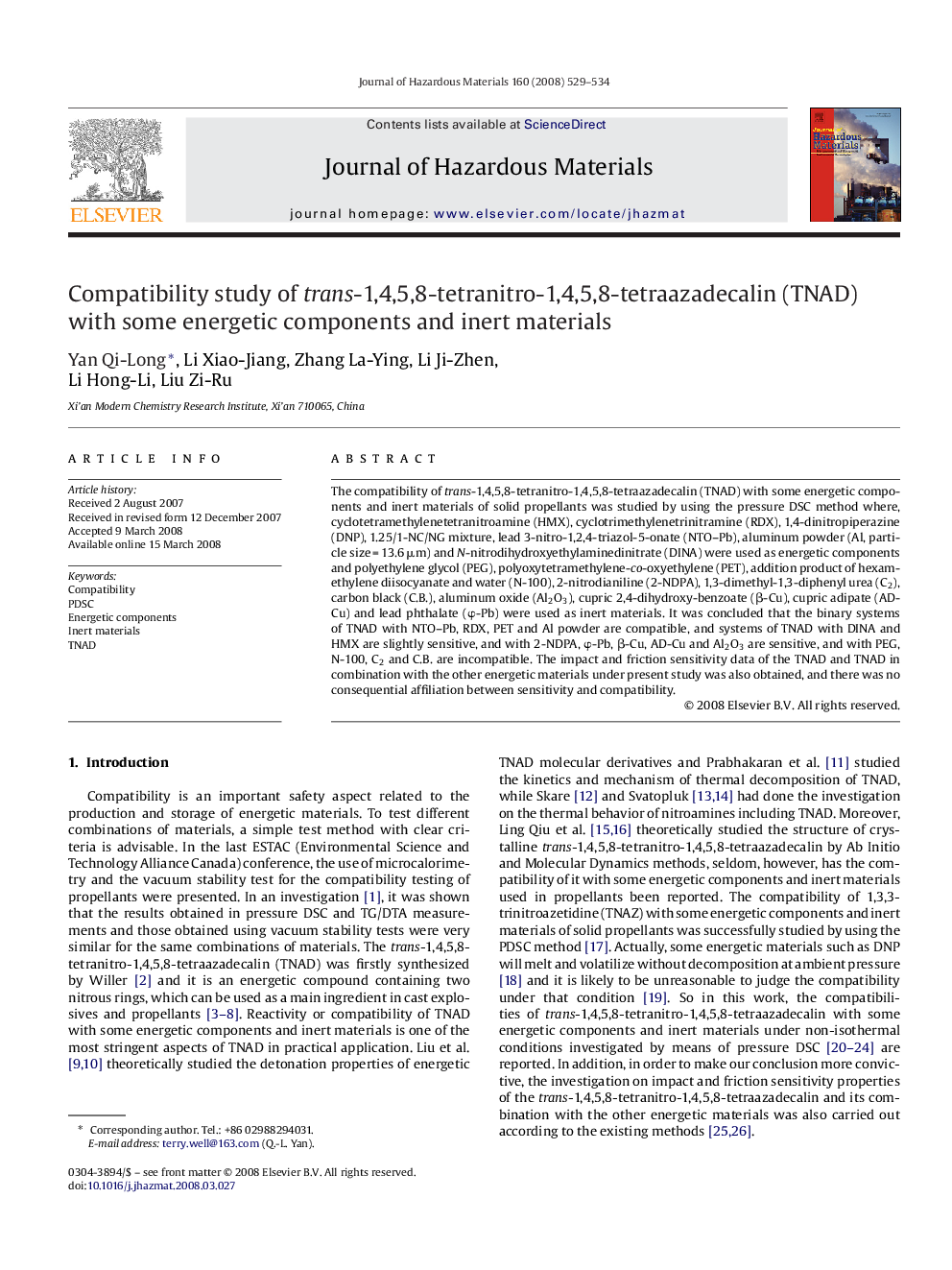| Article ID | Journal | Published Year | Pages | File Type |
|---|---|---|---|---|
| 582751 | Journal of Hazardous Materials | 2008 | 6 Pages |
Abstract
The compatibility of trans-1,4,5,8-tetranitro-1,4,5,8-tetraazadecalin (TNAD) with some energetic components and inert materials of solid propellants was studied by using the pressure DSC method where, cyclotetramethylenetetranitroamine (HMX), cyclotrimethylenetrinitramine (RDX), 1,4-dinitropiperazine (DNP), 1.25/1-NC/NG mixture, lead 3-nitro-1,2,4-triazol-5-onate (NTO-Pb), aluminum powder (Al, particle size = 13.6 μm) and N-nitrodihydroxyethylaminedinitrate (DINA) were used as energetic components and polyethylene glycol (PEG), polyoxytetramethylene-co-oxyethylene (PET), addition product of hexamethylene diisocyanate and water (N-100), 2-nitrodianiline (2-NDPA), 1,3-dimethyl-1,3-diphenyl urea (C2), carbon black (C.B.), aluminum oxide (Al2O3), cupric 2,4-dihydroxy-benzoate (β-Cu), cupric adipate (AD-Cu) and lead phthalate (Ï-Pb) were used as inert materials. It was concluded that the binary systems of TNAD with NTO-Pb, RDX, PET and Al powder are compatible, and systems of TNAD with DINA and HMX are slightly sensitive, and with 2-NDPA, Ï-Pb, β-Cu, AD-Cu and Al2O3 are sensitive, and with PEG, N-100, C2 and C.B. are incompatible. The impact and friction sensitivity data of the TNAD and TNAD in combination with the other energetic materials under present study was also obtained, and there was no consequential affiliation between sensitivity and compatibility.
Keywords
Related Topics
Physical Sciences and Engineering
Chemical Engineering
Chemical Health and Safety
Authors
Yan Qi-Long, Li Xiao-Jiang, Zhang La-Ying, Li Ji-Zhen, Li Hong-Li, Liu Zi-Ru,
